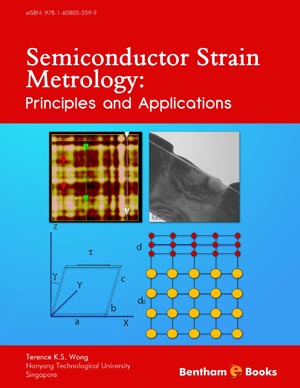Abstract
Two electron crystallographic techniques capable of measuring strain in nanoscale regions of a device sample are discussed. Both require the use of an analytical TEM. In nano-beam diffraction, a small collimated beam is diffracted by a crystalline sample and by measuring the distances between diffraction spots, the lattice spacing in the strained region can be found. This together with a separate measurement at the unstrained region will allow the strain to be characterized. The second method uses a convergent electron beam and involves measuring the shifts in the higher order Laue zone lines which are more sensitive to strain. In order to access these lines in the analytical TEM, sample tilting is required. This however limits the spatial resolution of the convergent beam electron diffraction technique to about 50nm.
Keywords: Electron diffraction, Nanobeam, Convergent beam, Bragg law, Reciprocal lattice.





















